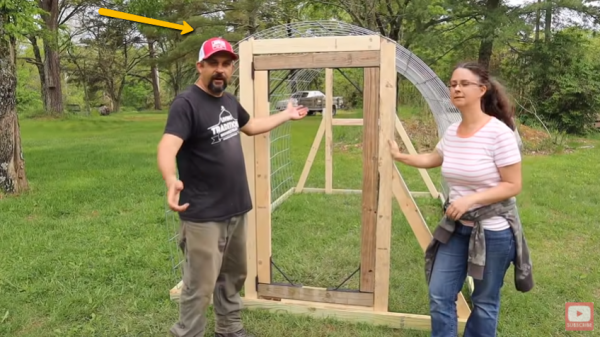True homesteading means taking control of your power supply.
Whether you’re preparing for grid outages, pursuing energy independence, or committing to off-grid living, a reliable solar generator for home backup is essential equipment.
These portable power stations, paired with solar panels, provide clean, quiet, renewable energy to keep critical systems running—from refrigerators and freezers to well pumps and communication devices.
But choosing the right off-grid power system for homestead life isn’t straightforward.
Most reviews focus on camping or RV use, overlooking homestead-specific demands like powering well pumps with high surge current or maintaining livestock systems through multi-day outages.
That’s why we’ve created this comprehensive guide, based on extensive real-world testing on active homesteads, to help you find the perfect solar generator that truly delivers when it matters most.
We’ll examine performance, durability, and total cost of ownership, focusing on what actually works for sustainable, self-sufficient living.
By the end, you’ll have the knowledge to invest confidently in a system that powers your homestead dreams.
Quick Picks by Homestead Scenario: Find Your Perfect Match
Your ideal solar generator depends on your specific power requirements.
Here are our top recommendations for common homesteading situations:
Small-Scale Backup (1-2 days essential power)
For urban homesteaders or minimal backup needs, compact units handle basics like refrigeration, lighting, and device charging during short outages.
- Top Pick: Jackery Explorer 1000 Pro or EcoFlow River 2 Pro
- Why: Optimal balance of portability, capacity, and quick recharge capability
Extended Outages (3-5 days comprehensive backup)
When you need sustained power for food safety, lighting, and communication during longer grid interruptions.
- Top Pick: Bluetti AC200MAX or EcoFlow Delta 2 Max
- Why: Excellent capacity-to-weight ratio, robust inverter output, expandable battery options
Well Pump + Critical Systems (120V/240V requirements)
This is where homestead power needs become specialized.
Well pumps require significant surge capacity, and continuous systems demand reliable long-duration power.
- Top Pick: EcoFlow Delta Pro or Bluetti AC300/AC500 systems
- Why: Industry-leading surge handling, expandable LiFePO4 batteries, crucial 240V split-phase capability
Whole-Home Short Outages (1-3 days with load management)
Comprehensive backup power for multiple circuits via transfer switch integration, with careful power consumption management.
- Top Pick: EcoFlow Delta Pro or Bluetti AC500 with multiple battery modules
- Why: High continuous output, massive expandable capacity, professional integration options
Our Homestead Testing Methodology: Beyond Manufacturer Specs
Real homesteading demands exceed typical product testing.
Our methodology addresses the unique challenges of self-sufficient living through rigorous, multi-season trials on active homesteads.
Load Profile and Runtime Testing
We tested with actual homestead equipment:
- Refrigerator/Freezer Cycling: 72-hour monitoring including compressor cycles and defrost periods
- Well Pump Surge Testing: Measured peak draw and recovery with 1/2 HP and 1 HP pumps
- Food Preservation Equipment: Sustained power delivery for pressure canners, dehydrators, vacuum sealers
- Daily Use Simulation: LED lighting, laptops, phone charging, and communication equipment
We recorded actual usable watt-hours delivered versus advertised capacity, accounting for inverter efficiency losses and real-world conditions.
Solar Charging Efficiency Analysis
Solar input performance is critical for homestead sustainability.
We tested charging capabilities using 200W, 400W, and 800W solar arrays under varying conditions:
- MPPT Controller Performance: Conversion efficiency during cloudy conditions and partial shading
- Peak Charging Rates: Maximum wattage achieved during optimal sunlight
- Practical Charging Times: Real-world 0-80% and 0-100% charging benchmarks
Extreme Weather Performance Testing
Homesteads operate year-round regardless of conditions.
We evaluated performance from 0°F to 100°F:
- Cold Weather Capacity: Battery degradation at freezing temperatures
- Charging Limitations: Low-temperature charging protection for LiFePO4 batteries
- Heat Tolerance: Inverter reliability under extreme summer conditions
Long-Term Durability Assessment
Six months of continuous homestead integration revealed:
- Build Quality: Resistance to dust, moisture, and general wear
- Portability Factors: Practical handling and setup considerations
- Noise Levels: Measured decibel output during heavy loads for indoor use compatibility
Detailed Reviews: Top Solar Generators for Homestead Use
After comprehensive testing, these units excel in homestead applications:
EcoFlow Delta Pro – Best Overall Expandable System
Capacity: 3.6kWh (expandable to 25kWh)
AC Output: 3,600W continuous (7,200W surge)
Key Features: X-Stream fast charging, 1,600W solar input, 240V capability
The Delta Pro dominates with massive expandable capacity and exceptional surge handling.
Its 7,200W surge capacity handles demanding well pumps, while X-Stream technology enables incredibly fast AC recharging.
Two units can combine for 7,200W/240V split-phase output—a game-changer for larger homesteads and workshops.
Homestead Performance: Excellent cold weather operation, reliable surge handling for 1 HP well pump, quiet operation suitable for indoor use.
Investment Consideration: Higher initial cost justified by expandability and professional-grade performance.
Bluetti AC300 – Best for 240V Split-Phase Applications
Capacity: Modular (requires B300 batteries, 3.072kWh each)
AC Output: 3,000W continuous (6,000W surge)
Key Features: Modular design, 2,400W solar input, dual-unit 240V capability
The AC300’s modular approach offers ultimate flexibility, scaling from 3kWh to 12.2kWh with four B300 batteries.
Like the Delta Pro, dual AC300 units provide 240V output for high-voltage equipment.
The 30A RV outlet adds versatility for mobile homestead applications.
Homestead Performance: Exceptional solar charging efficiency, robust surge handling, excellent app control for system monitoring.
Investment Consideration: No internal battery increases flexibility but adds to total system cost.
Jackery Explorer 2000 Pro – Best Solar Charging Efficiency
Capacity: 2.16kWh
AC Output: 2,200W continuous (4,400W surge)
Key Features: Superior solar efficiency, portable design, robust construction
While not as large or expandable as top-tier units, the Explorer 2000 Pro excels in solar charging efficiency, often achieving near-rated input even in suboptimal conditions.
Perfect for homesteaders prioritizing portability and reliable solar recharging for mid-range power needs.
Homestead Performance: Outstanding solar performance, reliable operation, good cold weather tolerance.
Investment Consideration: Limited expandability but excellent value for specific use cases.
Anker PowerHouse 767 – Best Budget High-Capacity Option
Capacity: 2.048kWh
AC Output: 2,400W continuous (4,800W surge)
Key Features: LiFePO4 batteries, 10-year lifespan claim, 5-year warranty
The PowerHouse 767 delivers solid performance at a competitive price point.
LiFePO4 batteries and extended warranty coverage provide confidence in long-term reliability, making it attractive for budget-conscious homesteaders with significant power needs.
Homestead Performance: Good surge handling, reliable operation, reasonable solar charging speed.
Investment Consideration: Best value proposition for high-capacity needs without premium features.
Solar Panel Integration and System Design
Maximizing your solar generator’s potential requires proper panel integration and system design.
Series vs Parallel Configuration Considerations
Series connections increase voltage, beneficial for longer cable runs and MPPT controller efficiency.
Parallel connections increase current, often used for smaller systems or when high voltage isn’t required.
Always consult your generator’s manual and consider professional installation for optimal performance and safety.
MPPT Controller Efficiency and Shading Tolerance
Modern solar generators use Maximum Power Point Tracking (MPPT) charge controllers, significantly more efficient than older PWM technology.
MPPT controllers excel in varying light conditions and partial shading—critical for homestead installations where perfect sun exposure isn’t always possible.
Seasonal Deployment Optimization
Roof-mounted panels provide permanent installation with security benefits but fixed angles that may not optimize year-round performance.
Ground-deployed panels with adjustable mounts allow seasonal angle optimization, maximizing energy capture throughout the year—a significant advantage for homesteaders focused on energy independence.
Transfer Switch Integration and Electrical Safety
Integrating solar generators into home electrical systems requires strict adherence to safety codes and professional installation.
Manual Transfer Switch vs Interlock Systems
Manual Transfer Switches create dedicated sub-panels for specific circuits, providing the safest grid isolation method.
Generator Interlock Kits prevent simultaneous main breaker and generator breaker operation, preventing dangerous backfeed conditions.
Backfeed Prevention and Code Compliance
Backfeed—power flowing from your generator into the grid—poses lethal risks to utility workers.
Both transfer switches and interlock kits prevent this dangerous condition.
Never attempt to backfeed power by plugging generators into wall outlets.
Professional Installation Requirements
Consult and hire licensed electricians for any grid-tied integration.
They ensure code compliance, prevent backfeed conditions, and create safe installations.
DIY electrical work can void insurance, create fire hazards, and endanger lives.
Total Cost of Ownership Analysis
Understanding long-term costs helps optimize your solar generator investment.
LiFePO4 vs NMC Battery Chemistry Lifecycle Comparison
LiFePO4 (Lithium Iron Phosphate) batteries offer 3,000-6,000+ cycles to 80% capacity, significantly outlasting NMC (Nickel Manganese Cobalt) batteries with 500-1,000 cycles.
While LiFePO4 units cost more initially, their extended lifespan often results in lower cost per kilowatt-hour over the battery’s lifetime.
Example: A unit with 5,000 cycles could handle daily full charge/discharge for over 13 years before reaching 80% capacity—exceptional longevity for homestead applications.
Warranty Coverage and Service Network Analysis
Strong warranties (5+ years for batteries and inverters) and accessible customer service are crucial for high-value investments.
Research manufacturer reputation, replacement part availability, and service network accessibility before purchasing.
Calculating True Long-Term Value
Consider total cost of ownership including:
- Initial purchase price and accessories
- Solar panel investment and installation
- Battery replacement costs over system lifetime
- Maintenance and potential repair expenses
- Energy savings and backup power value
Conclusion: Powering Your Homestead’s Future
Investing in the best solar generator for home backup represents a fundamental step toward energy independence and homestead resilience.
These robust off-grid power systems ensure your critical systems—food preservation, water supply, and communication—remain operational during outages while supporting your sustainable lifestyle goals.
By focusing on homestead-specific requirements like surge capacity for well pumps, cold weather performance, and long-term value through LiFePO4 battery technology, you can make informed decisions that truly support your self-sufficient vision.
Don’t let power outages disrupt your homestead progress—the right solar generator provides resilience, independence, and peace of mind.
Ready to secure your homestead’s energy future?
Explore our top-rated solar generators and find your perfect power solution today.




